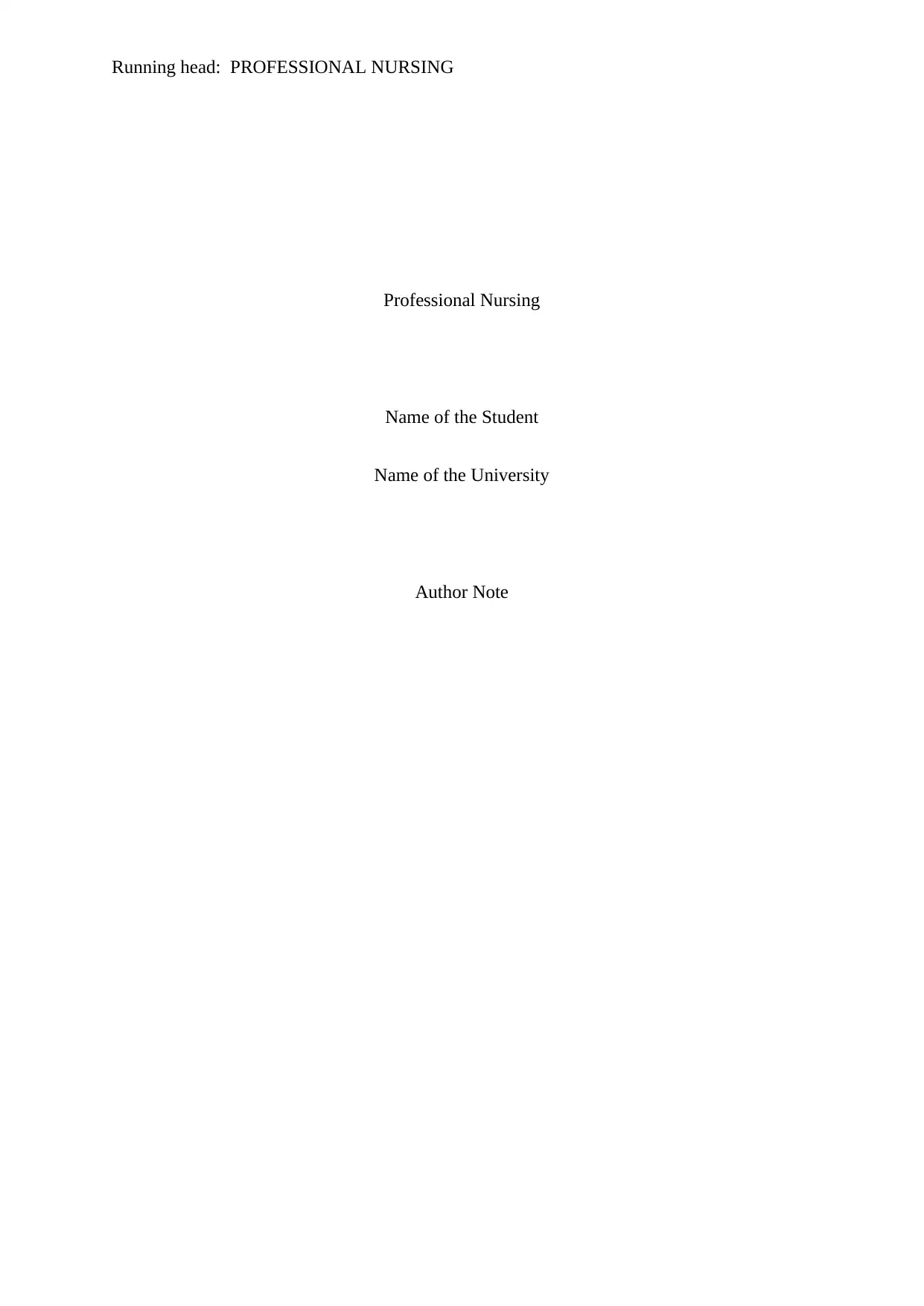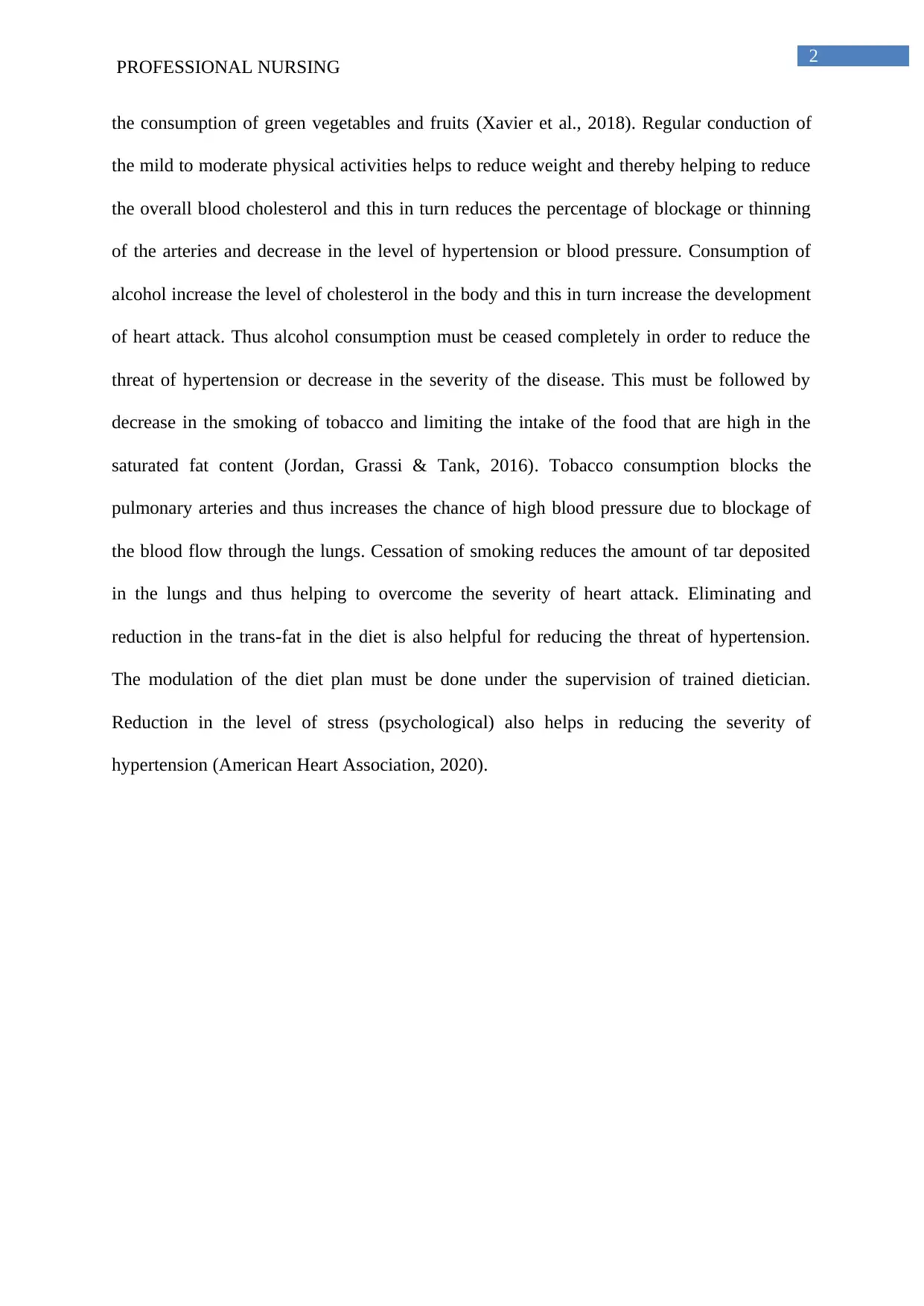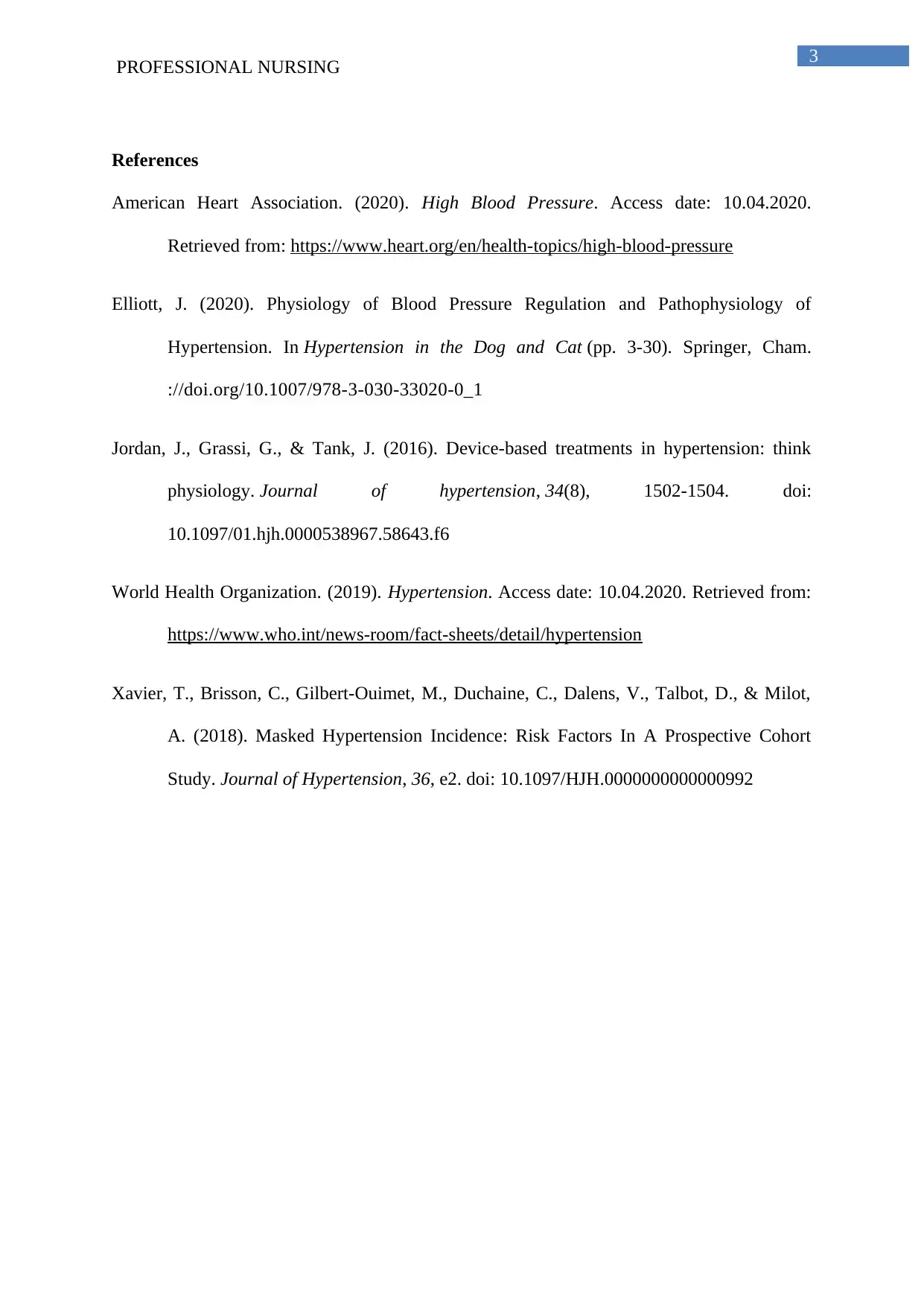Detailed Nursing Report: Hypertension Risks, Prevention and Strategies
VerifiedAdded on 2022/09/14
|4
|771
|12
Report
AI Summary
This nursing report addresses the critical health issue of hypertension, defining it as a significant medical condition increasing the risk of severe complications like heart attack and stroke. It highlights the global prevalence of hypertension, emphasizing its impact on both developed and developing countries, and identifies key risk factors, including excessive salt intake, unhealthy diets, sedentary lifestyles, and genetic predispositions. The report further details the serious complications associated with uncontrolled hypertension, such as heart failure and cerebral haemorrhage. It then explores preventive strategies, such as dietary modifications (reducing salt, increasing fruit and vegetable intake), regular physical activity, alcohol cessation, smoking cessation, and stress reduction. The report references key sources like the World Health Organization and the American Heart Association to support its findings, providing a well-rounded understanding of the topic.
1 out of 4











![[object Object]](/_next/static/media/star-bottom.7253800d.svg)